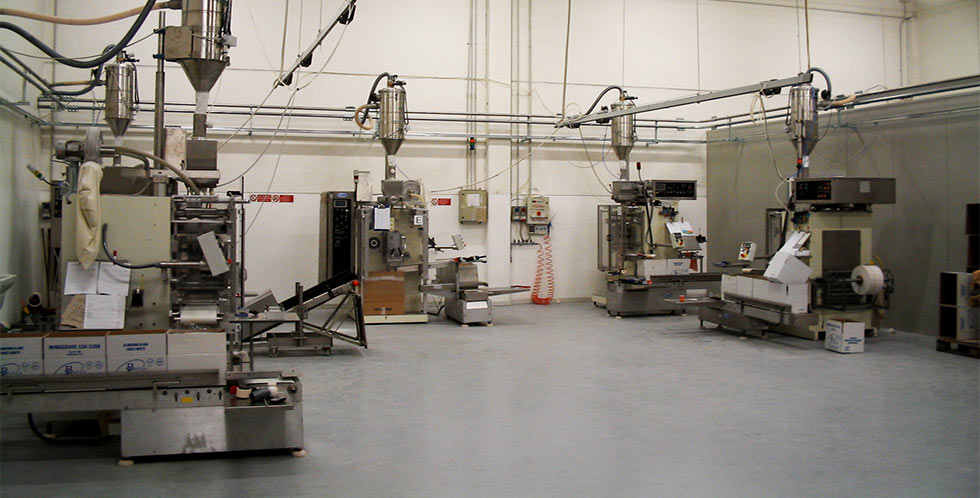Ask us for all the information you need
Advantages of pneumatic conveying
The advantages of pneumatic conveying and also the disadvantages can best be understood by taking a traditional mechanical conveying system, such as a conveyor belt, as a starting point. A mechanical conveying system works along straight lines, with minimal changes in direction, and each change in direction usually requires its own motor and guide. This type of choice is also characterised by a large number of moving parts, which usually increases need of maintenance and breakages.
A second advantage of pneumatic conveying is the amount of occupied space. A mechanical handling system occupies a lot of floor space, which is taken away from the company production site.
On the contrary, a pneumatic system uses a simple small-diameter pipe to transfer the material: the pipe can also be installed in vertical position and can have bends and elbows in the path. In this way the route is perfectly adapted to production requirements and if necessary it can run around existing machinery. The required space is therefore much less than for mechanical conveying and there are also very few moving parts, which reduces maintenance costs.
Other advantages of pneumatic conveying are
• greater safety
• no contamination
• improved overall product quality
• filtration systems with automatic or manual cleaning
• perfect closure of the product cycle: from production to dispatch
• cleaner environment thanks to closed pipelines
• reduction of manual work
• real-time control of the plant
• short return on investment
• remote adjustment of work cycles
• possibility to vary the route with simple deviation valves
• easy suction of material from heaps, even those that are difficult to access
• savings by purchasing loose materials instead of packaged ones
Great flexibility
The dimensioning of a system based on pneumatic conveying can range from small quantities up to hundreds of kilos per hour. This extreme flexibility is one of the greater strengths of pneumatic conveying and but does not end with the transported material volume and the distance covered by the convey. Considerable flexibility is possible both in the structure of the systems and in the ways they can operate. For example, plants with multiple feed and/or discharge points on a common line, and also the availability of a huge variety of silos and hoppers.
Pipelines can be safely installed horizontally, vertically, as a combination of the two, with curved pipelines and with elbow pipelines. The material flow within the pipes can be easily controlled and monitored, constantly checking inputs and outputs.
Pneumatic conveying systems are able to move a wide range of materials within closed pipes. This means that even potentially hazardous substances can be safely conveyed. The risk of spillage of materials, dust or dirt is minimal, meaning that these systems can easily meet the requirements of any health and safety regulations.

To take into account
In the initial stages of choosing a conveyor system, energy assessment is one of the first aspects to consider. In industrial applications, if the rate of transferred material and the distances are fixed, a pneumatic conveying system will often have a slightly higher energy consumption than a mechanical system. Changing the air pressure to move material is generally less efficient than mechanical conveying.
Another point in favour of mechanical conveying is that in the pneumatic conveying system it is necessary to install a filtering system at the exit to separate the conveyed material from the gas used for transport. The nature of certain materials can also be a problem, e.g. materials in very large pieces or very viscous materials, and certain substances increase pipes corrosion. In recent years, however, considerable progress has been made to increase the spectrum of materials that can be used. Conditioning the material before feeding or coupling a parallel line to create artificial permeability or retention of the material.
We don’t hide anything to you
An industrial partner must be fair and frank. If a pneumatic conveying system presents more disadvantages than advantages considering your actual needs, we will be the first to tell you.
